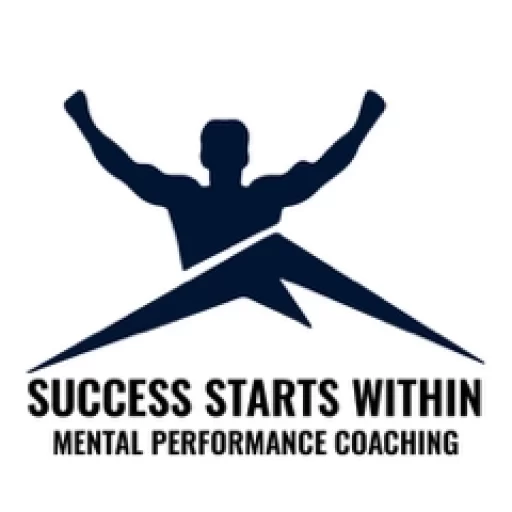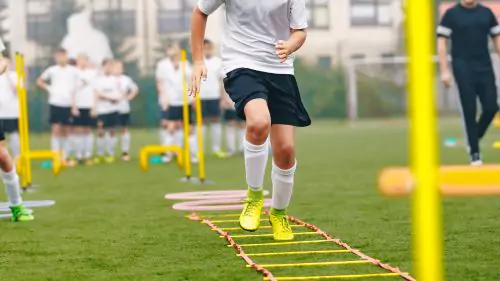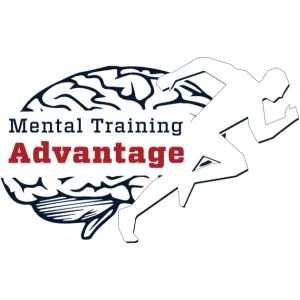What drives you to compete?
It’s an interesting question to consider as an athlete. What motivates you to train hard every day? Where does that desire to bounce back from failure come from when you’ve seen more losses recently than wins?
Better yet, what is the reason you’re playing your sport in the first place?
Motivation for athletes is interesting, as it can vary greatly from player to player.
As a mental performance coach, I work with a wide range of athletes. Likewise, I’ve seen first hand the many different ways athletes motivate themselves. Interestingly enough, I’ve also seen how destructive it can be to find motivation in the wrong thing.
Now, that’s not to say that there is a right and wrong way to motivate yourself as an athlete. What I am saying is that there are forms of motivation that work best for specific types of people.
Your job is to identify where your sports motivation comes from, and whether or not that’s actually the best form of motivation for you to focus on.
To help, in this article you will learn the two forms of athlete motivation, examples of each, and ways you can optimize your motivation depending on which form you find best for yourself.
Two Forms of Motivation
Motivation is about desire. It involves a clear reason for your actions. Typically that reason being something which will provide you with happiness or pleasure.
How such pleasure or happiness is obtained is where we begin to see differences in forms of motivation.
We can break motivation for athletes down into two different categories: extrinsic and intrinsic motivation.
Extrinsic Motivation
Have you ever done something because you wanted a reward at the end? What about doing something to avoid a negative consequence?
If you have, then you’ve experienced extrinsic motivation.
Extrinsic motivation is behavior that is driven by an outcome, result, or reward which is separate from the act itself.
This is a popular form of sports motivation because of the heavy emphasis on winning.
You and your team spend hours each day training, perfecting your craft, out of hopes that it will translate to you all winning. On a greater scale, the season is played with an eye set on winning a championship.
Within extrinsic motivation, enjoyment of what you’re doing is not necessarily at the forefront of your mind. It’s that outward reward, that end target which pushes you forward. In fact, you may even be absolutely miserable in the present moment.
But that’s okay…as long as the work you’re doing will lead to the outcome you desire.
“Within extrinsic motivation, enjoyment of what you’re doing is not necessarily at the forefront of your mind. It’s that outward reward, that end target which pushes you forward.”
Examples of Extrinsic Motivation for Athletes:
- Hustling in practice to make your coach happy.
- Training hard to win a championship.
- Practicing every day to get a scholarship.
- Playing your sport to make your parents happy.
- Working hard during practice so you don’t get yelled at.
- Playing for the money.
- Training and playing in order to get better stats.
Extrinsic motivation is consumed with the outcome. Your actions are performed with the idea that they will lead to the result you want.
Intrinsic Motivation
In contrast to extrinsic motivation, intrinsic motivation is defined as behavior driven by internal joy or satisfaction.
As an athlete, this means your motivation to play your sport comes from within.
When you exhibit intrinsic motivation, it doesn’t mean that you won’t reach an outcome or get a reward. The truth is, within athletics, results are going to happen whether you focus on them or not.
An intrinsically motivated athlete performs because the act of performing is in and of itself enjoyable. This form of motivation takes to heart the phrase, for the love of the game.
When you are intrinsically motivated, the reason you play comes from the game itself. Let’s say you’re a basketball player, for example. If you are driven out of intrinsic sports motivation, your focus is not on winning the game as much as it is on the act of playing.
You love dribbling up and down the court. You love the feeling of playing defense, getting a steal, and taking it down to the other end for an easy basket. You play because you love to play basketball.
The same holds true no matter what sport you play.
“When you exhibit intrinsic motivation, it doesn’t mean that you won’t reach an outcome or get a reward. The truth is, within athletics, results are going to happen whether you focus on them or not.”
Examples of Intrinsic Motivation for Athletes:
- Hustling in practice because of your passion for the game.
- Staying after a game to practice because you love the feeling of working hard.
- Playing your sport because the act brings you joy.
- Studying film because you love to learn.
- Going to strength and conditioning because it feels good to train hard.
- Playing hard even when losing because you love the game.
Both intrinsic and extrinsic motivation can be good for athletes…likewise they can both have their negative effects. Therefore, before we get into how you can decide which motivation type is best for you as an athlete, let’s examine the pros and cons of each one.
Pros & Cons of Each Motivation Type for Athletes
As with anything, intrinsic motivation and extrinsic motivation present positives and negatives for athletes. It’s important when working to decide which form of motivation is best for you, that you truly understand the good and the bad of both.
To do so, we’re going to look at each of the motivation types individually again and dive deep into their pros and cons.
Pros & Cons of Extrinsic Motivation
Focusing on the outcome. Training hard because you desperately want to win that championship. Bouncing back from a mistake because you’re hell bent on proving everyone else wrong. All of these are what encompass extrinsic motivation for athletes.
Now how can such outcome focus be good…and how can paying too much attention to results be harmful?
Pros of Extrinsic Motivation
- Pushes you to train hard because you have to be better than the competition.
- Can improve focus after a mistake because you know you need to let go of the past and focus on playing well right now in order to win the game.
- It’s strong team motivation because you are all working towards a common goal.
- Awards and stats feel good and bring recognition and can help you reach higher levels within your sport.
- It can keep you a step ahead of your competition because you don’t want to fall behind and get benched/not get the results you want.
- Helps you push through tough workouts and deal with activities that might not be fun because you know they are helping you work towards your goals.
Cons of Extrinsic Motivation
- It can lead to sports performance anxiety if too much focus is put on the outcome.
- Leads to a need for social approval if you are always looking to outside factors to validate your level of play.
- Often results in distracted play if you fall behind and can cause a drop in motivation if you feel that losing is inevitable.
- Difficult when you are on a losing team or are in a slump to keep working hard if the extrinsic reinforcements and rewards are not there.
- Can lead to a loss of love for the game because you play in order to reach an outcome rather than playing because you enjoy what you do.
- Can lead to perfectionism and the fear of failure in sports because you are too focused on the outcome.
Pros & Cons of Intrinsic Motivation
Loving what you do seems like the absolute pinnacle of motivation. If each day you shot out of bed, full of internal desire to train for your sport, do you think you’d be too worried about the outcome?
Probably not, but also maybe…
Just as with anything, while intrinsic motivation for athletes seems like the best option, it still has some downsides. So, let’s take a look at the pros and cons of intrinsic motivation in sports.
Pros of Intrinsic Motivation
- Helps build good habits.
- Increases resilience since you aren’t so worried about the outcome.
- Strengthens focus because you get the most joy from performing your skills.
- Leads to greater work ethic if you enjoy training and working hard.
- Is more lasting than extrinsic motivation, especially if you’re in a slump or on a losing streak.
- It’s stable, and not as impacted by external factors.
- Can reduce sports performance anxiety since you are focused more on the present moment.
Cons of Intrinsic Motivation
- Can reduce the competitive edge you need sometimes to play against tougher opponents.
- If you focus too much on enjoying what you’re doing, it can be difficult to push through grueling practices and training sessions.
- Sometimes it can appear to others (such as your teammates or coach) like you don’t care about winning.
- If you don’t enjoy training and putting in extra work, it may keep you from being as good as you could be.
- May result in increased fear if you begin losing or playing poorly and are suddenly not enjoying the game as much anymore.
Deciding on Your Motivation Type as an Athlete
As with any mindset, both intrinsic and extrinsic motivation have their pros and cons for you as an athlete. But what we know to be constant is the need for motivation and discipline within sports.
You don’t always have to be bursting out of your shoes with excitement. What you do need, though, is an internal drive to keep training, keep going when you fail, and keep aiming for greater heights IF your goal is to become the best athlete you can be.
Where such internal drive comes from is what you now must decide.
Is it going to be based on intrinsic motivation-the love for the game itself, or is it going to be based on extrinsic motivation-the desire to win and achieve external rewards?
To help make your decision, there are three questions you can ask yourself.
“You don’t always have to be bursting out of your shoes with excitement. What you do need, though, is an internal drive to keep training, keep going when you fail, and keep aiming for greater heights IF your goal is to become the best athlete you can be.”
Question #1: What do you love about your sport?
The word love immediately brings my mind to intrinsic motivation. We talked a lot about how this form of athlete motivation involves loving what you do. However, it also comes into play with extrinsic motivation.
You may love the feeling of winning. Maybe you absolutely hate training and find practices miserable, but all that suffering is worth it when the game or match ends and you’re bathing in the feeling of victory.
So for this first question, I want you to think of what you truly love about your sport. What is it that gets you excited about playing?
To help with the process, make yourself a list of the top five to ten things you love about the sport you play.
Then, go back through and examine whether the things you wrote down are more intrinsic or extrinsic in nature.
Question #2: When you’re playing your best, what are you focused on?
Brainstorm with me for a second…what are the top one to three performances you’ve had in your life?
Write them down on a piece of paper.
Now, as you think back to each one (I know this is tough if they were a while ago), try to remember what you were focused on.
Were you thinking a lot about how excited you were to win the game? Were you out there determined to prove someone wrong? Or were you completely absorbed in what you were doing, loving every second of playing?
Identifying what you were focused on and what was driving your actions on your very best days provides key insight into the best form of motivation for you to use as an athlete.
Question #3: What is your why?
Any time we’re discussing athlete motivation, we must bring up the question of why do you play?
Now the answer may have evolved over the years, and also may have been distorted. If you were to have answered when you were twelve, you may have responded in a different way than you may now at eighteen, for example.
Your why as an athlete involves the true reason behind why you play. It helps you uncover the drive within that pushes you to train everyday and makes it worthwhile to face defeat and persevere.
Once you know your why, you can then use it to fuel your motivation and actions moving forward.
If your why involves more external factors, such as making it to college or playing professionally, you likely exhibit more extrinsic motivation.
If your why involves more internal factors, such as wanting to play your sport as long as you can because you love it, then you likely exhibit more intrinsic motivation.
“Your why as an athlete involves the true reason behind why you play. It helps you uncover the drive within that pushes you to train everyday and makes it worthwhile to face defeat and persevere.”
Increasing Your Motivation as an Athlete
The whole reason for you to uncover which motivation type you represent is to then use this knowledge to increase your motivation as an athlete.
Motivation helps you push through challenges, train harder than your competition, and ultimately leads you to becoming the best player you can be.
This only happens once you identify which motivation type works best for you, and then leverage that for your own improvement.
By this point in the article, you should have a good understanding as to which motivation type matches you the best. Now let’s examine how you can use either extrinsic or intrinsic motivation in the greatest way that will lead to more success for you as an athlete.
Tips for Using Extrinsic Motivation
- Use it to push through tough workouts and challenging practices.
- Be careful not to let it turn into the need for social approval.
- When you face setbacks and failures, use extrinsic motivation to help refocus yourself on a future goal.
- Keep setting more and more challenging goals for yourself, otherwise you may lose motivation if the rewards are too easy.
- Be careful not to become so focused on the outcome that it leads to the development of fear and anxiety.
Tips for Using Intrinsic Motivation
- Understand what about your game brings you joy.
- Look for small details that you love and can focus on during practices and games.
- Focus on being in the moment while you play.
- Work to set outcome based goals to keep pushing yourself forward, but then turn your attention onto the process to use intrinsic motivation to get you there.
- Work to make sure external factors like fear, anxiety, and high expectations don’t lead to you losing the love for the game.
“Motivation helps you push through challenges, train harder than your competition, and ultimately leads you to becoming the best player you can be.”
Final Thoughts
Knowing what drives you to compete as an athlete is huge, because once this is understood, you can use it to your advantage.
Within sports, there are two distinct forms of motivation: extrinsic and intrinsic motivation.
Extrinsic motivation means you are driven by rewards and outcomes, while intrinsic motivation means you are driven more by the love for what you do.
In all reality, as an athlete, you will experience a combination of the two. Your job is to figure out which of these works best for you to focus on.
Do you perform better and train harder thinking about how badly you want to win? Or do you train harder and play better simply focusing on how much you enjoy playing the game?
No matter which style fits you best, your goal should be to use it to the best of your abilities and continue to work on increasing your motivation as an athlete. Thank you for reading and I wish you the best of success in all that you do.





